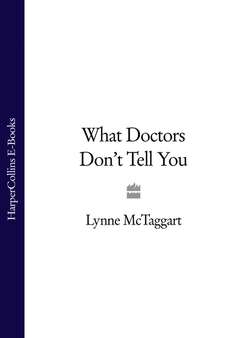Читать книгу What Doctors Don’t Tell You - Lynne McTaggart, Lynne McTaggart - Страница 35
Radiation and Down’s Syndrome
ОглавлениеAmid all the effort to prevent Down’s syndrome, no one is asking whether we are looking in the right place. Robert Mendelsohn, who belittled the entire notion of ‘tired eggs’ based on age, was one of the first to warn mothers that their chances of Down’s syndrome increased with the amount of accumulated exposure to x-rays, not their age per se. ‘Despite overwhelming evidence that this is the case, doctors continue to tell all older women that they shouldn’t have babies because their eggs may be weary, rather than determining how much radiation exposure they have had.’72
Mendelsohn’s farsighted view about the connection between Down’s syndrome and radiation has been validated. Researchers from the Freie University in Berlin discovered a direct link between Down’s syndrome – which suddenly increased sixfold in the city in January 1987 – and the Chernobyl nuclear reactor accident which happened nine months earlier.73
These women were breathing in high levels of radiation – especially iodine-131 – for two weeks after the accident, during which time they conceived.
The researchers were able to discount the usual theory that Down’s syndrome is related to the age of the mother. The average age of the mothers with Down’s babies during the year of the nuclear accident was virtually identical to the average age of mothers with Down’s babies the decade before, and the percentage of women over 35 with Down’s babies after Chernobyl was identical to the percentage over the decade before. After making the discovery, the German researchers uncovered other studies which supported their conclusions. Incidents of Down’s syndrome increased dramatically in Kerala, India and Yangjiang County, China, after women were exposed to similarly high levels of background radiation from the soil.
The study group, led by Professor Karl Sperling, accepts that its evidence ‘contradicts current textbook opinion’. The age of the mother per se doesn’t seem a reliable indicator of Down’s syndrome, other than the fact that an older mother may have a high build-up of radiation in her system, from x-rays. They concluded that any exposure to ionizing radiation, especially around the time of conception, should be avoided.
A similar connection was made by scientists exploring the rate of Down’s births and tests at nuclear plants. They examined a community in Fylde in Lancashire, and discovered that the incidence of Down’s births peaked in 1958 and 1962 to 1964, when there were higher levels of nuclear fallout. The pattern was also followed in 1957, when there was a fire at the nearby Windscale – now Sellafield – nuclear power station. Women over the age of 35 seemed most affected, again perhaps because they had already accumulated some radiation during their lifetimes and the nuclear reaction radiation sent these levels over the top.74
The German findings add evidence to the argument that Down’s syndrome is the result of environmental factors and not simply age. In fact, a major study in 1990 discovered that Down’s syndrome babies had higher levels of aluminium in their brains than did normal babies.75
The discovery that different racial groups have a markedly different rate of Down’s syndrome offers more evidence of an environmental cause. A recent study, which tracked births in 17 states across the US between 1983 and 1990, discovered that American blacks have fewer Down’s babies than any other racial group (with 7.3 per 10,000) and Hispanics fare the worse (with 11.8 per 10,000). The Down’s syndrome rate also varied markedly between states, with 5.9 per 10,000 recorded in Kansas and 12.3 per 10,000 in Colorado.76
In a book looking at the results of over 30 years’ research into Down’s children, the condition appears not as daunting as medicine would have us believe. Psychologist Janet Carr has monitored a group of 54 Down’s children since 1964 and found that they do not suffer from ill-health any more than a similar group of normal children. There was no significant excess of marital stress or breakdown in parents of Down’s children, and no adverse effects on siblings. In fact, virtually all the families simply loved their Down’s members, and wouldn’t have dreamt of ending their lives.77
